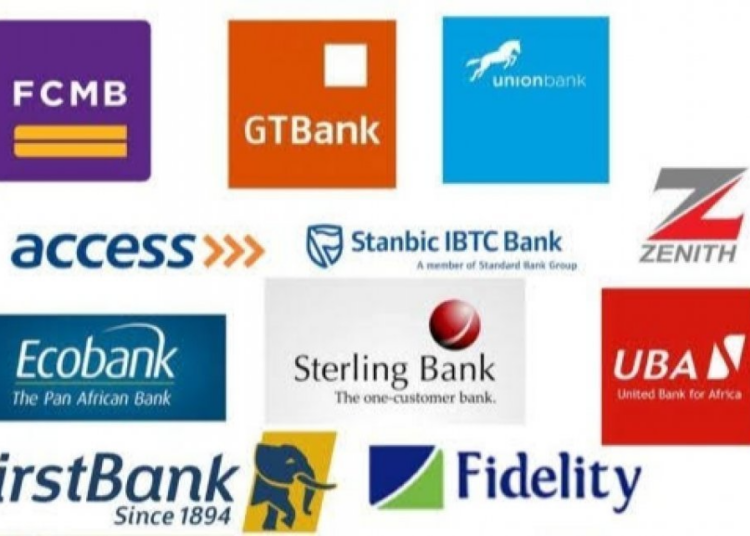Monetary Policy experts have cautioned banks in the country to cut down on this to ensure a robust balance sheet.
The cost to income ratio standing at 70.5 per cent in Nigerian commercial banks, is a record high amongst the country’s peers across the world, it was learnt.
On his part, a member of the Monetary Policy Committee(MPC) of the Central Bank of Nigeria(CBN), Adeola Adenikinju, in his personal statement at the May meeting just released by the apex bank on its website, noted that, the industry’s cost to operating income declined marginally from 70.6 per cent to 70.5 per cent between March and April 2023.
He stressed the need to address the high ratio saying, “in other climes, the ratio is 23.5 per cent in Turkey, 50.6 per cent in Brazil, 41.0 per cent in Malaysia, 62.0 per cent in South Africa, 43.2 per cent in Angola, 35.2 per cent in Egypt, Kenya is 45.2 per cent and Ghana, 46.1 per cent.”
Meanwhile, banks’ total assets from April 2022 to April 2023 rose by N16.65 representing a 25.88 per cent and that Industry credit increased by N4.54 trillion for the year under review. This is also as Non-Performing Loans (NPLs) ratio further declined to 4.4 per cent in April 2023 from 4.5 per cent in March 2022, which is still below the regulatory benchmark of 5 per cent.
According to Adenikinju, “Total Assets of the banking industry grew by N16.65 trillion or 25.88 pe cent between April 2022 and 2023. Industry credit increased by N4.54 trillion or 17.40 per cent between end April 2022 and end-April 2023. Gross credit has been on an upward trajectory since 2019. Total industry deposits increased by N8.84 trillion or 21.4 per cent between the end of April 2022 and April 2023.”
He added that, the stress tests conducted on the industry show that, it can weather the major risks and vulnerabilities in the system, noting that, the financial soundness indicators remain positive and that the banking system remains strong, sound, and resilient.
“The capital adequacy ratio (CAR) stood at 12.8 per cent in April 2023, still within the prudential requirement of between 10 per cent – 15 per cent. Non-performing loans (NPLs) ratio declined from 4.5 per cent in March 2023 to 4.4 per cent in April 2023.
“Liquidity ratio (LR) rose to 45.3 per cent in April 2023, from 43.8 per cent in March 2023. This is above the minimum 30 per cent recommended by the prudential requirement.”
On her part, Ahmad stated that: “industry credit increased by N4.54 trillion between end-April 2022 and 2023 with significant portions of the credit granted to output elastic sectors (manufacturing, general commerce, agriculture, information, and communication), and has been in an upward trajectory since 2019, yet the monthly trend in credit growth declined from 1.31per cent in March 2023 to 0.05 per cent in April 2023.
“Lending rates also remain high in response to the contractionary monetary policy stance.
These developments point to the importance of balanced actions in the pursuit of the price stability mandate.
“Industry soundness indicators also remain strong as of April 2023, with capital adequacy ratio at 12.8 per cent, non-performing loans ratio at 4.4 per cent from 5.3 per cent in April 2022 and liquidity ratio at 45.3 per cent above the 30.0 per cent minimum even as credit to the real sector continued to grow.”
She also added that, stress test results showed that industry solvency and liquidity positions could withstand mild to moderate shocks in the short to medium term. “Nonetheless, the sector must continue to build adequate capital buffers – ongoing implementation of the Basel III capital standards (which prescribes additional capital buffers) are relevant in this regard,” she added.
Deputy governor, Economic Policy Directorate, Dr. Kingsley Obiora, in his personal statement, said: “the continuous decline in NPL was attributable to write-offs, restructuring of facilities, Global Standing Instruction (GSI) and sound credit risk management. Consequently, total gross credit increased by N4.54 trillion, representing an increase of 19.71 per cent between the end of April 2022 and the end of April 2023, from N26.10 trillion to N30.64 trillion, due to the increase in the industry funding base, the CBN’s directive on Loan-to-Deposit Ratio (LDR), and business strategy and competition.”





